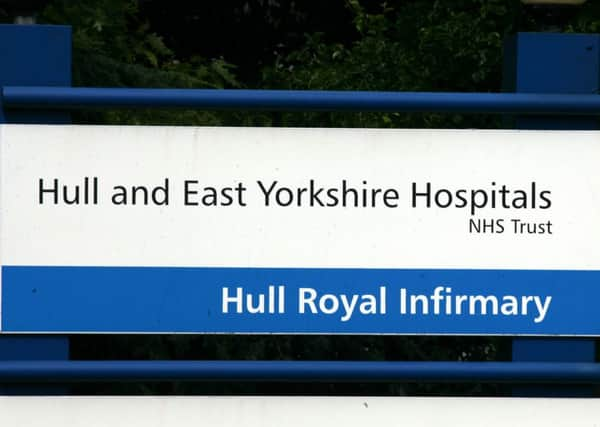Death rates ‘worryingly high’ at several of region’s hospitals


The latest Dr Foster hospital guide also highlights worryingly high mortality levels at Northern Lincolnshire and Goole Hospitals NHS Foundation Trust, which was put into special measures earlier this year following a Government review into high death rates.
A higher-than-expected number of patients at Hull and East Yorkshire Hospitals NHS Trust died after surgery in 2012-13, the guide shows.
Advertisement
Hide AdAdvertisement
Hide AdRotherham NHS Foundation Trust had a higher than expected number of deaths in hospital or within 30 days of release according to its summary hospital-level mortality indicator (SHMI) score.
And the rate of in-hospital deaths at South Tees Hospitals NHS Foundation Trust, which treats patients at the James Cook Hospital, Middlesbrough, and the Friarage Hospital in Northallerton, was found to be high using the hospital standardised mortality ratio (HSMR).
Mortality rates at the trusts, except Northern Lincolnshire and Goole trust, which runs services in Grimsby, Scunthorpe and Goole, were within or lower than expected levels across all other measures, however.
Ian Philp, chief medical officer at Hull and East Yorkshire, said at least half the deaths in the data used to compile its score were patients who were undergoing medical procedures rather than surgery under anaesthetic, many of whom were already critically ill.
Advertisement
Hide AdAdvertisement
Hide Ad“We see it as our duty to give the best possible care to our patients, so we will intervene and carry out procedures to give them the best chance of survival, even if they are really poorly and their outlook is not overly positive,” he said.
“This is something most people would want us to do if it were their relative or loved one, but this approach clearly does not reflect well when it comes to scoring systems such as this.”
Patricia Bain, acting executive health informatics officer at Rotherham, said death rates had reduced considerably since March, when the figures were compiled. Its high mortality figure can be explained in part by the level of end-of-life care delivered by the hospital, which is the 16th-highest in the country, she said.
A South Tees spokeswoman put the rise in the number of in-hospital deaths down to more elderly patients suffering respiratory illnesses during last year’s “unusually long and cold winter”.
Advertisement
Hide AdAdvertisement
Hide AdNorthern Lincolnshire and Goole chief executive Karen Jackson said while mortality rates remained high they had “reduced steadily” since the previous year and described the results as “excellent progress”.
The Leeds and Doncaster and Bassetlaw trusts are also highlighted by the guide as having one hospital with a notably higher HSMR than the overall trust level.
However in Leeds, overall death rates were lower than expected and those at the supposed “outlier” – Leeds General Infirmary – were still within expected levels across all measures.
Mortality rates at Doncaster and Bassetlaw hospitals were also within expected levels across all indicators but in-hospital deaths were higher at Doncaster Royal Infirmary than at Bassetlaw.
Advertisement
Hide AdAdvertisement
Hide AdTrust medical director Sewa Singh said it was due to an increased number of “very seriously unwell patients” admitted.
An extra £7m invested to increase staffing levels and bed capacity and the introduction of seven-day working is expected to lower mortality rates, he added.
Across England and Wales, the guide showed 16 trusts had higher than expected in-hospital death rates, down from 20 the previous year. Some 237,100 patients died in hospital in 2012-13, 4,400 more than the previous 12 months but 5,300 fewer than 2010-11.